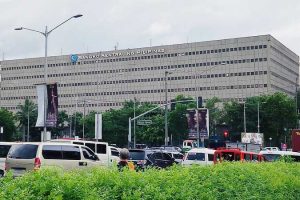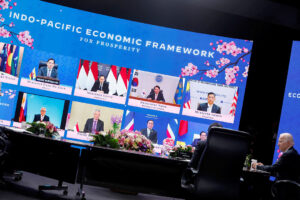BSP’s relief measures boost lending growth

THE targeted relief measures of the Bangko Sentral ng Pilipinas (BSP) for lenders has helped sustain credit growth amid the recovery of the economy from the coronavirus pandemic, an official said.
BSP Supervisory Policy and Research Department Director Maria Cynthia M. Sison said the relief measures were meant to encourage banks to continue to lend or restructure loans, especially to credit-worthy micro, small, and medium enterprises (MSMEs).
“The recovery in the economy alongside BSP’s targeted relief measures has reinforced growth in bank lending in general and to MSMEs,” Ms. Sison said during the central bank’s 4th Regional Macroeconomic Conference Series on Wednesday.
She said the banking system has allocated P254 billion of loans to MSMEs as alternative compliance with reserve requirements as of Dec. 29, 2022, the end of the last reserve week that month.
Thrift banks also lent out P16.4 billion in the same period, while rural and cooperative banks granted P6.4 billion in loans as alternative compliance.
Ms. Sison said total loans to MSMEs grew by 2.9% to P468.2 billion as of end-November 2022 from the P454.6 billion seen a year earlier.
Broken down, MSME loans stood at P62.6 billion and P58.1 billion as of end-November for thrift banks and rural and cooperative banks, respectively.
Southern Luzon banks also provided P28.7 billion in loans to small businesses. This is around 23.8% of the combined MSME loans of thrift banks and rural and cooperative banks.
Meanwhile, banks continued to provide relief to borrowers as restructured loans amounted to P327.8 billion as of end-November. This represents about 2.7% of the banking system’s total loans, Ms. Sison said.
Restructured loans for thrift banks reached P14 billion at end-November, rural and cooperative banks recorded P6.1 billion, while Southern Luzon banks booked P1.5-billion restructured loans.
“Some of the BSP’s relief measures remain in place to encourage banks to continue to lend or restructure loans, especially to credit-worthy MSME borrowers. This includes the temporary reduction in the credit-risk rates of loans granted to MSMEs,” Ms. Sison said.
“This relief measure is in place until end-June 2023. Banks are also still allowed to use their MSME loans as alternative compliance with the reserve requirements. This means that for banks, instead of depositing funds in the BSP, they can use these funds to lend out to their MSME clients,” she said.
First implemented in April 2020 at the height of the pandemic, the BSP allowed MSME loans to be counted as part of banks’ reserve requirements in a bid to boost lending to the sector.
The central bank also capped loans to MSME and large enterprises that banks could use as alternate reserve compliance at P300 billion and P425 billion, respectively.
“The BSP has also retained other measures which will help support access of enterprises to financial services,” Ms. Sison said.
“For instance, the single borrowers limit of a bank was temporarily increased to 30% from 25% and this is in place until end-June 2023. This gives banks more flexibility in lending for big-ticket projects,” she added.
Ms. Sison said banks have played an important role in promoting inclusive growth and in serving the needs of MSMEs and agri-agra sectors.
“Beyond the temporary relief measures, we will continue to pursue policy reforms on risk governance and risk management to ensure the safety and stability of the financial system,” she said.
“These prudential reforms will be complimented by initiatives in the areas of sustainable finance and digital transformation. These areas have the capacity to revolutionize ways by which consumers, enterprises, and financial markets operate and thrive on their new economy,” Ms. Sison added. — Keisha B. Ta-asan




